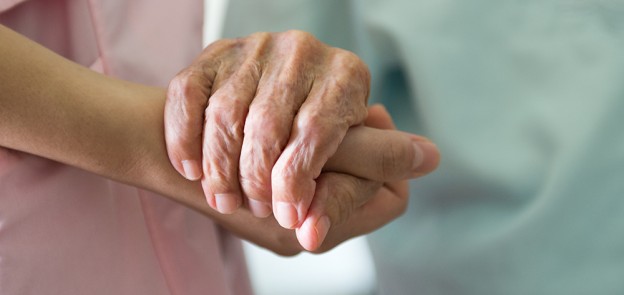For older adults, falling is extremely dangerous and can cause substantial injuries or disabilities. Long-term care residents usually have several risk factors for falls. Several of these incidents can be avoided if a risk for falls care plan is developed for each individual resident. Each person is unique and has his own weaknesses and strengths, all of which should be assessed.

How to Determine the Risk for Falls
The first step to prevent a fall is to determine a resident’s risk. When conducting an assessment, it is important to use a simple assessment tool that addresses the most common risk factors for elders. Although it is virtually impossible to plan for every possible scenario, the evaluation will help eliminate falling hazards.
Federal regulations require nursing homes to use the interdisciplinary assessment tool called the Minimum Data Set (MDS). The tool pinpoints several fall risk factors, such as dizziness, use of certain drugs or medications, history of falls, restraint use and wandering. Since the MDS is very long and broad, nursing homes often have one-page assessment tools to quickly elevate a resident. The short tool should include:
- History of falls
- Vision problems
- Mental status and cognition
- High risk medications
- Mobility issues
- Impulsivity
- Bowel and bladder control
- Recognition of others and environment
- Ambulatory assistance equipment
- Use of attached devices such as catheters, oxygen or intravenous lines
Nursing Interventions in Risk for Falls Care Plan
1. Assess the Environment Routinely
Routinely assess the resident environment to identify external risk factors and take appropriate corrective measures:
- Document any findings using a standardized checklist.
- Make sure all appropriate hospital administration and staff (including case managers, maintenance staff and housekeeping) are aware of any issues.
- Continue to re-assess environment on a regular basis.
2. Assess for Multifactorial Risk Factors to Fall
When a resident is admitted, transferred from another unit or has a change in condition, screen the individual and develop a risk for falls care plan:
- Use fall-risk assessment tools to evaluate the resident’s risk of falling.
- Add findings to problem list, nursing notes and interdisciplinary progress notes.
- During and outside interdisciplinary team meetings, communicate and talk over findings to eliminate high risk factors.
- Flag and identify resident’s chart as high risk fall individual.
- Inform resident and family about the risk for falls care plan and prevention measures.
- If transferred to another unit, inform new staff on assessments and actions taken.
- If discharged, provide resident and family with information on how to minimize fall risk, measures to take at home, rehab for better mobility and other pertinent information.
3. Institute General Safety Precautions
According to facility guidelines, institute general safety precautions. This may include:
- Easy access for resident to call button
- Use of floor mats
- Use of floor mats
- Use of a low-rise bed
- Recommendation of fall prevention program
- Use of nonskid shoes
- Easy access to toilet, bedpans or urinals
- Usage of pressure sensitive sensors or alarms
- If possible, elimination of physical restraints
- Eliminate clutter in high fall risk areas
- Overall increased surveillance and observation
- Use of corrective glasses
- Proving appropriate staff with instructions on what to do if resident does fall
4. Identify the Patients Who Require Additional Precautions
Clearly identify residents who require a specialist evaluation or additional safety precautions, including individuals with:
- Current hip fracture
- A risk for fracture due to osteoporosis
- Mental illness or impaired judgment
- Current brain or head trauma
5. Review and Discuss with Interdisciplinary Team
Develop a risk for falls care plan with interdisciplinary team utilizing results from assessment tools:
- Inform physician of assessment findings.
- Institute preventative measures and monitor effectiveness.
- If resident falls, observe carefully for serious injury.
- Following the fall, check resident’s level of consciousness, monitor vital signs, assess functionality and conduct neurological checks. If indicated, order appropriate diagnostic tests such as x-rays and CT scans. Transfer to specialty unit if deemed necessary.
6. Follow-up Monitoring
Conduct follow-up of condition:
- Keep track of resident’s fall incidence and injury, comparing it to other data on the same unit.
- Using the National Database of Nursing Quality Indicators, compare falls per resident to national benchmarks.
- Continually incorporate improvement measures into prevention programs.
- Identify the roles of all team members, including clinical and nonclinical personnel.
- Teach the resident and family members fall prevention techniques to implement at home.
Tips for Developing Risk for Falls Care Plan
- Utilize a standardized fall risk assessment tool along with other appropriate means to determine a resident’s risk for falling. Record findings in nursing and interdisciplinary notes, as well as resident’s list of problems.
- Communicate and discuss findings with interdisciplinary team to create plan of care that will minimize risk of falls.
- If a resident is at risk for falling, clearly flag or mark the chart so staff is aware of the issue.
- Provide clinical and nonclinical staff with written instructions on what to do if resident falls.
- If resident transfers to another unit or conditions change, share risk assessment and care plan with new staff.
- When resident is discharged, explain the risk factors and recommended measures to prevent falls outside the facility to the resident and family.
